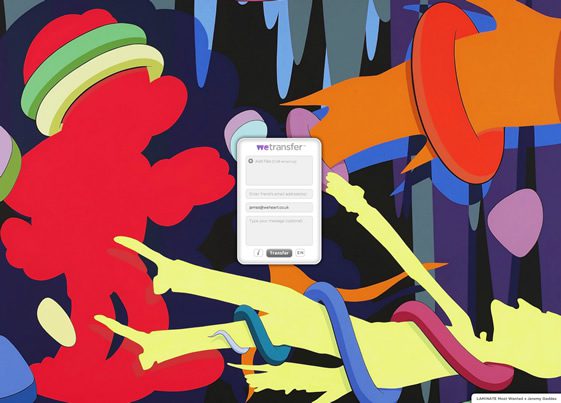If you move large files around the internet – which we do a lot of, every day – you’ll have no doubt come across WeTransfer. The file transfer service with a designer’s aesthetic has pretty much become the creative world’s go-to website of choice, it is frankly as much a part of our daily work life as the likes of Google, Wikipedia or Apple; the days of hunting for a download link amongst an adware minefield are thankfully a thing of the past.
The site’s USP lies in its unique advertising proposition, where the page’s background is at once both the aesthetic and revenue stream – a crafty ploy that dates back to 2008 and the personal blog of WeTransfer founder, and archetypal online entrepreneur, Nalden. One of the design-blog world’s pioneers, self-confessed geek Nalden founded his blog as a wide-eyed 16 year-old… fast-forward a decade, and the Amsterdam entrepreneur is knocking out web enterprises left right and centre, swanning around the world in swanky cars, and hooking up with the likes of Pharrell Williams; needless to say, life is good.
And pretty good it is too for his most well known enterprise (at the helm of studio Present Plus Nalden also runs Kuvva and is working on the secretive Lowdi) WeTransfer, a recent infographic that the team released shows some impressive stats for the file transfer site, and things are set to get increasingly better, with WeTransfer 2.0 on the horizon; hell, we’ve even started using its name as a verb – now that’s success.
As WeTransfer is named by Wired as one of Europe’s 100 Hottest Startups, we caught up with the intrepid, uncompromising figure behind it and talked about re-thinking traditional advertising…
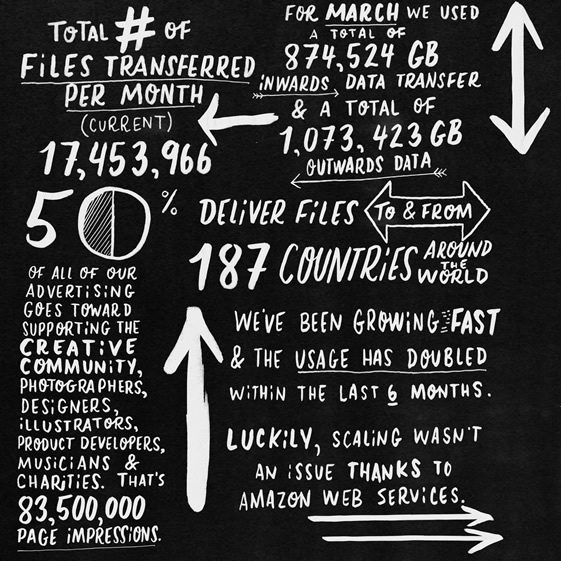

Wallpapers as advertising stems back to your hugely popular personal blog, can you tell us a little about the original lightbulb moment, when you realised this was an alternative to banners and traditional online advertising?
This was more of an accident. The blog was and still doesn’t have any business goals. It’s all about sharing. At one point I was speaking to an audience that I could monetise, but I didn’t want to use standard banner advertising. That format is old, ugly and super intrusive. So I wanted to integrate an advertising format and make it part of the design, which I succeeded in by using the full wallpaper of the site. Nothing fancy, but the execution is what matters here.
This was back in 2008. Suddenly, photographers, illustrators, and brands were able to be visually involved in my world and create awareness. The success was that people really wanted to download those images/wallpapers. For me, that’s a true ‘brand connection’. So I still challenge brands to advertise on a higher creative level. Beautiful advertising still exists, but we all continue to get spammed with the ugly shit, ha ha…
Obviously with WeTransfer, the business model became mature and really set a new standard in online advertising. I am happy with the brands who understand branding and allowed me to make a living of what I love most. Sharing.
What does a typical working day consist of?
I don’t really have a typical day, because every day I do some work. It definitely involves spending a lot of time doing email… luckily I’m blessed I can do that everywhere with a 3G connection.
Do you retain creative control over the adverts that get placed on WeTransfer?
We advise all the brands that wants to advertise with us. Definitely. And most of the time it’s a challenge to get the creative level the same as I have on my blog. But WeTransfer is a mass-audience which means you have to give in every now and then. I don’t like it, but that’s the game.
Still it’s a challenge for us to be that game changer, and make it as easy as possible for brands to understand and trust that less really IS more and deliver quality images for advertising purposes. Or great simple copy. It’s all there, only they try to over-complicate and please too many people internally. Then again, we have a lot of brands who deliver perfect advertisements. So it’s not taking up too much time of my day.
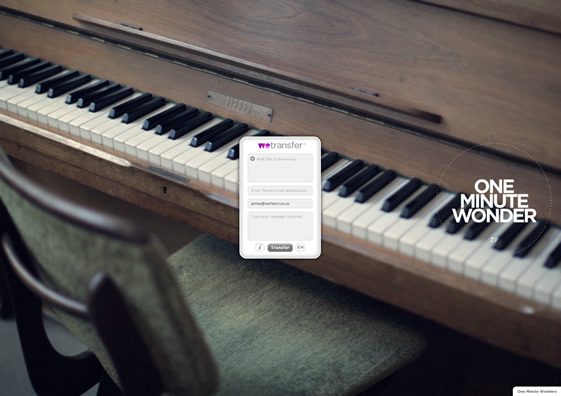
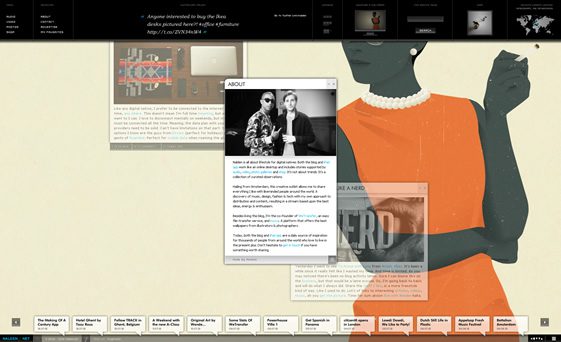
Where it all started, on Nalden’s personal blog
What makes for a good wallpaper?
It has to be non-obtrusive, yet appealing enough to create an emotional link with the user. When people get interested they usually click for more info or satisfaction. Good photography really generates the highest CTR, but amazing artworks and illustration also do well. Inevitably, big logos and lots of text don’t work so well.
If you had the opportunity to collaborate with any artist, designer or brand on a WeTransfer background, who would that be; and why?
I’d love to have Shepard Fairy design something for WeTransfer. I think his style and attitude fits the brand and service. Obey Giant! Ha ha…
What makes you smile?
A lot of things, but specifically on WeTransfer I love the positive responses on the service. People really love it, and even use WeTransfer as a verb. That shit cray. It makes me smile when people tweet they are watching the ‘slideshow of images’ while uploading or downloading a file… just because they love the creativity.
When you’re not running one of “Europe’s 100 hottest startups”, where could we expect to find you?
When I’m not in Amsterdam, I’m usually somewhere else on a road trip. Key cities I love to visit are New York, London and Paris.
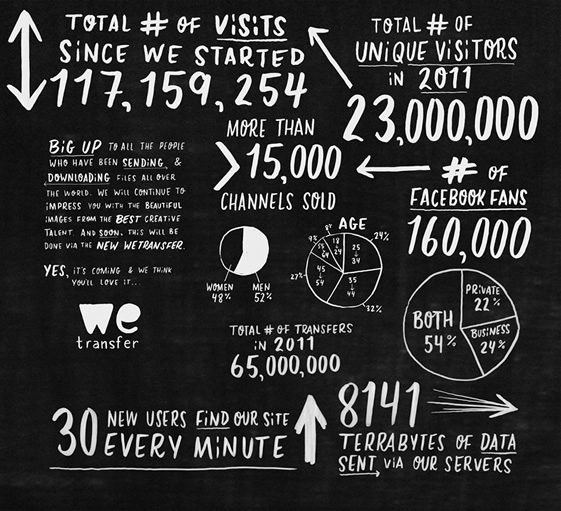
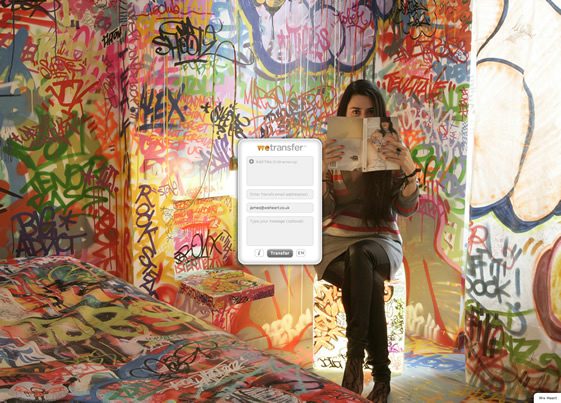
Our own weheart.wetransfer.com channel
Is there one piece of advice you’d offer a budding startup?
Always listen to your gut-feeling. Sometime you’ll need to make short cuts, but when shit feels wrong, don’t do it. If you really care about things, make an argument about it. It shows you’re truly passionate about what you do. And never give out shares easily. It’s your business. Let people prove they are worth it. And most of all… this isn’t a fairytale. It’s a messed up story of working hard 7 days a week, 356 days a year. Luckily, if you choose to do something you like, it won’t feel like work.
What’s next for WeTransfer and Nalden?
For WeTransfer it’s exciting times. So for Nalden it is too, ha ha. We are about to launch a new beta of our HTML-based version. We call it the New WeTransfer since it’s a lot more stable and feels more contemporary. We’ll also introduce a few new features. Over the years people kept asking for more features, so we combined the most popular ones in a package called ‘PLUS’ which people can buy for just $10 a month. Plus it allows you to share files up to 5GB, password protect your files, store files up to 50GB and there’s an address book amongst a few other features.
The real challenge was to keep it simple. Adding features kills the simplicity of the service which is why we are so popular in the first place. The coming months I’ll be focussing on tweaking and improving the product.
